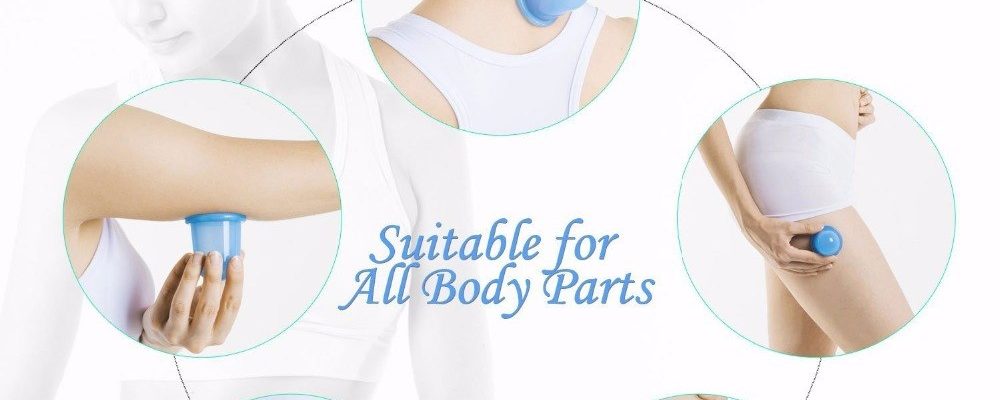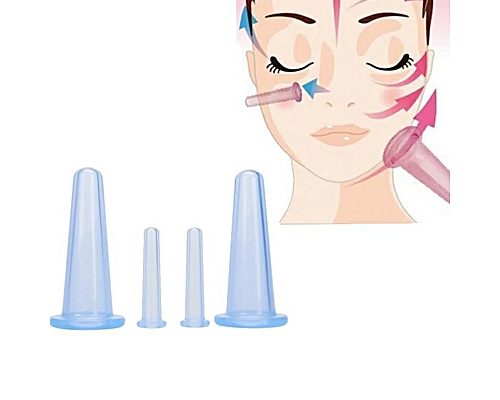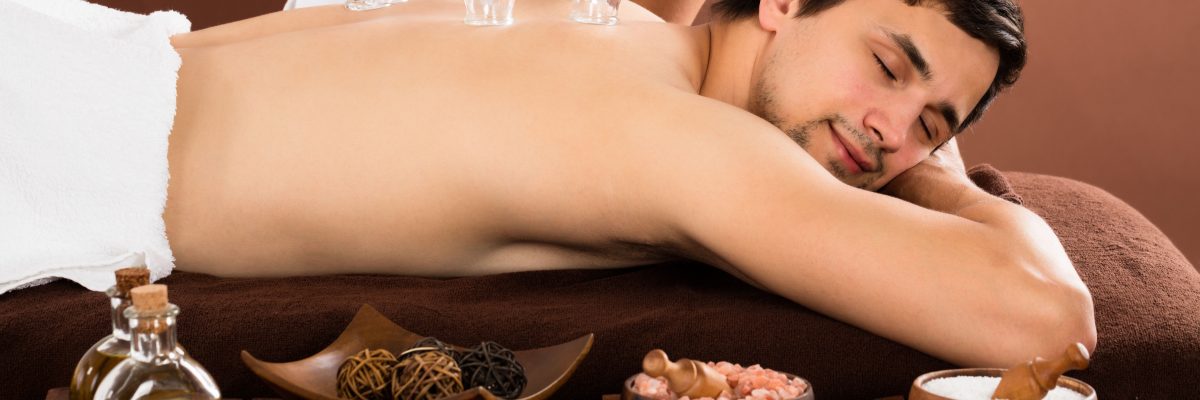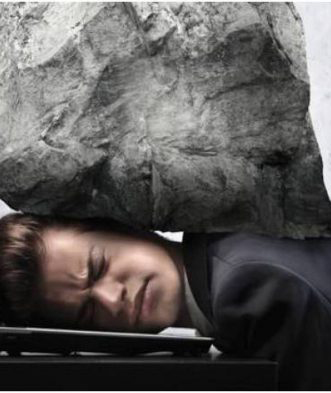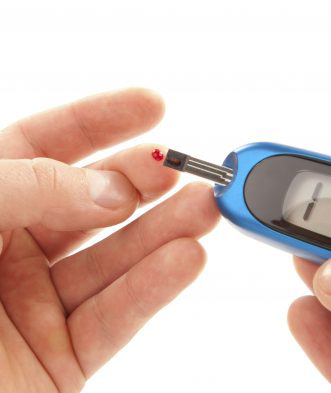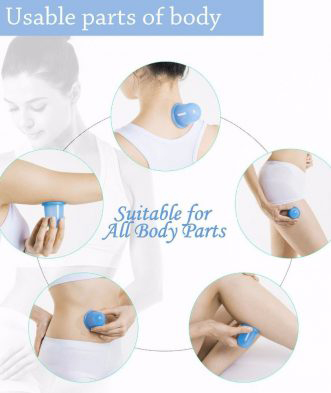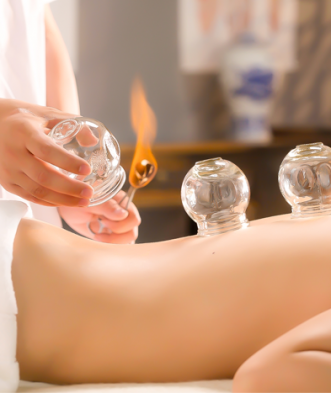
Cupping Facial & Message
number of views :1934
facial cupping :
Cupping is an alternative therapy that uses suction cups to stimulate your skin and muscles. It can be done on your face or body.
The suction promotes increased blood circulation, which may help relieve muscle tension, promote cell repair, and aid in other regeneration.
It’s also said to improve the flow of your “qi” (pronounced “chee”). Qi is a Chinese word meaning life force.
Although the practice is deeply ingrained in Traditional Chinese Medicine, some researchers say that the earliest pictorial records originated in ancient Egypt.
Is facial cupping the same as body cupping?
Yes and no. Although they’re based on the same principle of restoration, facial and body cupping are executed differently.
Facial cups are typically smaller and softer. They’re used to gently pull the skin away from deeper layers of fascia. This increases blood flow to the area and rejuvenates the skin without leaving cup marks behind.
“Over time this practice improves the complexion and diminishes fine lines and wrinkles,” says Ananda Emily Reese, LAc, of Reese Acupuncture.
Body cupping, on the other hand, is primarily used to alleviate aches and pains.
Cup marks are almost always left behind, but they do serve a diagnostic purpose; the size, shape, and color are said to reflect the amount of “stagnation” or cellular waste buildup. These marks fade as your lymphatic system processes the waste.
How does it work?
The suction effect pulls blood into the area of skin underneath the cup. This saturates the surrounding tissue with fresh blood and promotes new blood vessel formation.
Cupping also promotes sterile inflammation. Sterile inflammation is a form of pathogen-free trauma. With cupping, it results from mechanical trauma.
The vacuum-like suction separates different layers of tissues, resulting in microtrauma and tearing. This triggers an inflammatory response, flooding the area with white blood cells, platelets, and other healing aids.
What are the benefits?
Facial cupping has been shown to:
– increase oxygen-rich blood circulation
– strengthen skin and connective tissues
– stimulate cells responsible for collagen production
– relax muscle tension
– Because of this, the practice is said to:
brighten skin
– minimize the appearance of scars, fine lines, and wrinkles
– tone chin, jawline, neck, and décolletage
– decrease puffiness
– regulate oil production
– improve nutrient delivery and product absorption
Will it leave bruises?
Facial cupping shouldn’t leave bruises. However, bruising can occur if the cup is left in the same place for too long. Reese says that discoloration can occur in as little as five seconds, so make sure you keep the cup moving.
The benefits of Cupping in modern massage therapy.
As a Manual Physical Therapist, I am constantly thinking about how to use my body mechanics in the most productive way for the treatment of my clients. This is also to ensure I have longevity in a career I love, and that my body can withstand the often heavy workload that is placed upon it by a physically demanding job. This has driven me to constantly update my techniques and search for tools that alleviate pain and relieve muscle tension in the most effective way.
I’m normally not a sucker (pun intended!) for gimmicks, and have to admit to previously being a little skeptical about the clinical application of suction therapy, or “Cupping” as it is more commonly known. This in turn has driven me to understand the process, benefits, and see why it is quickly becoming a popular therapy method in Singapore, Asia and beyond. Here’s a basic outline of the therapy, and its application in modern massage treatments.
WHAT IS CUPPING?
Cupping originated thousands of years ago, and is one of the oldest forms of manual therapy (I’m not going to take you through its history – the internet is your library if you’re interested!). By placing a glass or a plastic cup onto the skin, the therapist creates a vacuum in the cup which draws the skin, muscle, and fascia up into the cup. This vacuum can be created with either a hand suction pump or a burning cotton wool ball. The latter is becoming less common in modern therapy due to the relative lack of control on the suction.
In Western medicine, Cupping is used as a direct clinical application. The therapist notes an area of restriction and applies the suction directly onto it to affect change. This is different to traditional Eastern methods which rely on affecting change in the line of meridians or “Qi” throughout the body. Used in conjunction with other massage treatments, Cupping is a useful tool to add into the treatment mix as it provides a different sensation and effectiveness, and thereby improving the overall results.
Cupping is used in the treatment of many types of muscle tensions, including common ailments such as neck pain, shoulder pain, tight trapezius, lower back pain, spinal congestion, and plantar fasciitis.
Source: WSJ
WHAT DOES CUPPING FEELS LIKE?
Contrary to the commonly-held impression, the suction of the cups does not hurt. In fact, most people find the sensation very pleasant, a sort of a release. The cups can remain in position for several minutes, or the therapist can glide them over the skin similar to the movements of a massage. This negative pressure is the opposite to a deep tissue massage – a pulling versus a pushing effect.
THE BENEFITS OF CUPPING
Relaxation: suction cups provide a negative pressure on the skin, muscles, and fascia. This is in contrast to the positive pressure of the deep tissue massage, and can be a very relaxing and soothing experience.
Promotes blood circulation speeds up muscle recovery. The negative pressure from the suction allows new blood to flowinto that area of tissue with several benefits –
Provides a feeling of relief from physical and emotional tensions
2. Begins the healing and regeneration process – the exchange of blood allows the removal of toxins and dead cells
3. Enhances circulation
4. Warms the skin, and softens tissues to regain elasticity
5. Reduces inflammation
USEFUL APPLICATIONS OF CUPPING IN MASSAGE THERAPY
Cupping increases the blood flow and warms the skin, which makes makes it easier for the therapist to get into the ‘knots’ in your muscles.
Once the cup is removed, the skin relays information to the therapist about the underlying tissue. A darker patch on skin would indicate an area of restriction or adhesion in the muscles. It can then help the therapist to pinpoint exactly where to massage.
As Cupping is a less strenuous (but no less effective) form of therapy, it helps the therapist to prolong their ability to treat clients at a high level for a longer duration.
Cupping is used as part of a bespoke suite of massage treatments to improve your body’s condition, which could include deep tissue, stretch therapy, “GuaSha” (explanation for another time!), and a combination of different techniques depending on what is needed.
DOES IT LEAVE UNSIGHTLY DARK CIRCLES ON THE SKIN?
A good therapist will explain the potential effect of Cupping on the skin prior to treatment to get your consent. It is likely that there may be a resulting reddening of the skin directly under the cup, the colour of which depends on the health of the underlying tissue. Healthy tissues do not leave a dark circle.
The technique I use is to slowly move the cup over the soft tissue as I would in a massage, rather than leave it in one spot which is more common in TCM (Traditional Chinese Medicine). This method is less likely to leave dark circles on the skin.

